In the animal kingdom having teeth isn’t always a requirement. Birds don’t have any, neither do anteaters or the largest animals on the planet — blue whales. But for those animals with teeth, there are amazing variations in how many they have.
And certainly, humans won’t be on this list! With adults only having 32, non-replenishing teeth, people have a long way to go to match some of these animals.
1. Snails
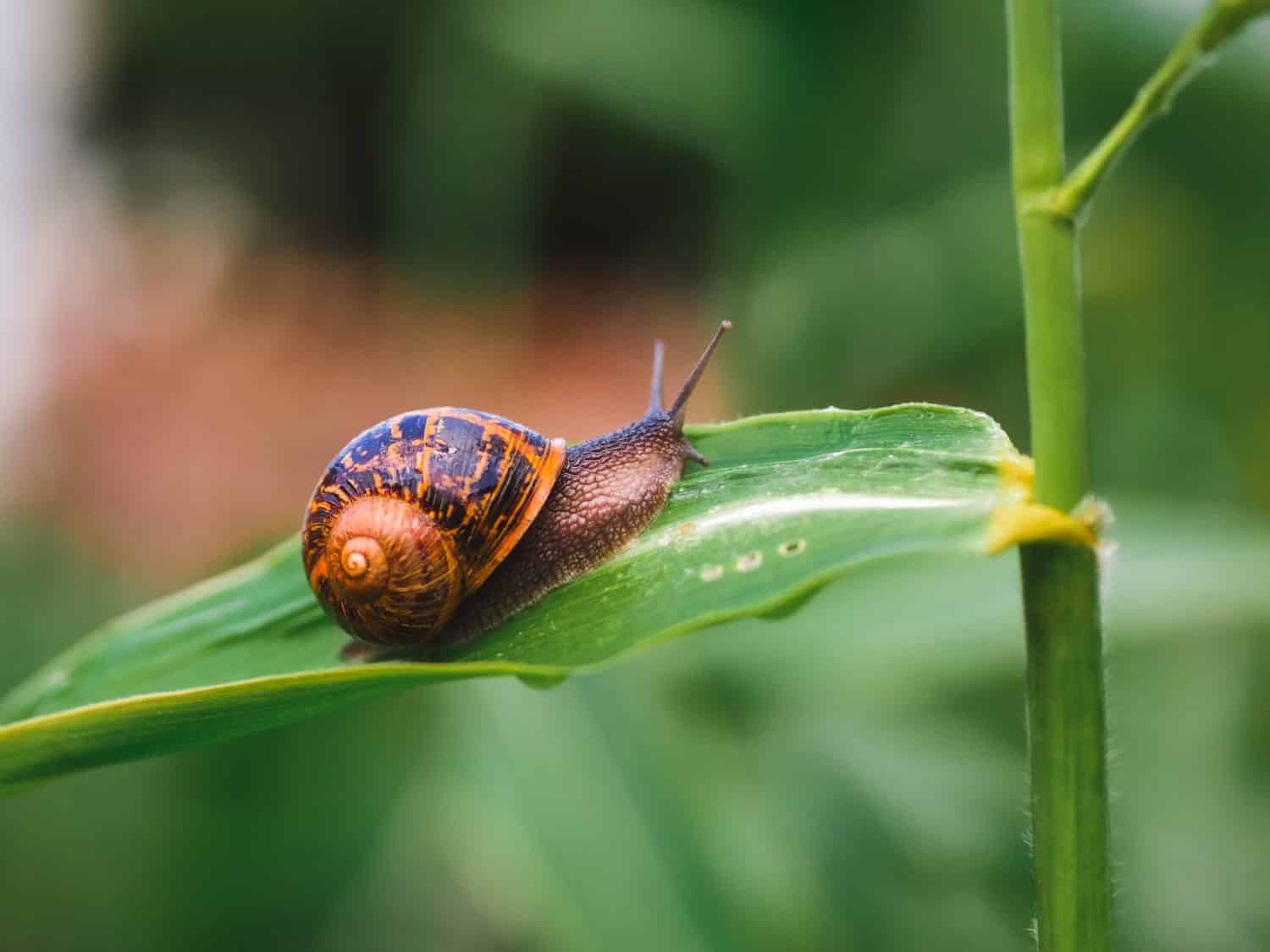
The typical garden snail can have around 14,000 teeth.
©Marko Blagoevic/Shutterstock.com
These slow-moving creatures that live on land and in salt and freshwater have several distinct features. For one, they grow their own “homes,” in the form of a shell. Like many other mollusks, they secrete calcium carbonate to make a hard shell.
But while these spiral-shaped shells are the most visible part of a snail, their most unique facet, their teeth, are microscopic. While the numbers vary, scientists say that snails have up to 20,000 teeth. The garden-variety snail has an average of 14,000. These minuscule teeth are arranged in rows on what’s called the radula, which is more like a tongue than a jaw.
In 2015 researchers discovered that the teeth of a limpet, a type of sea snail, consist of the strongest natural material found on Earth. As researchers told the BBC, the teeth are made from “a mixture of goethite (an iron-containing crystal) nanofibers encased in a protein matrix.”
2. Slugs
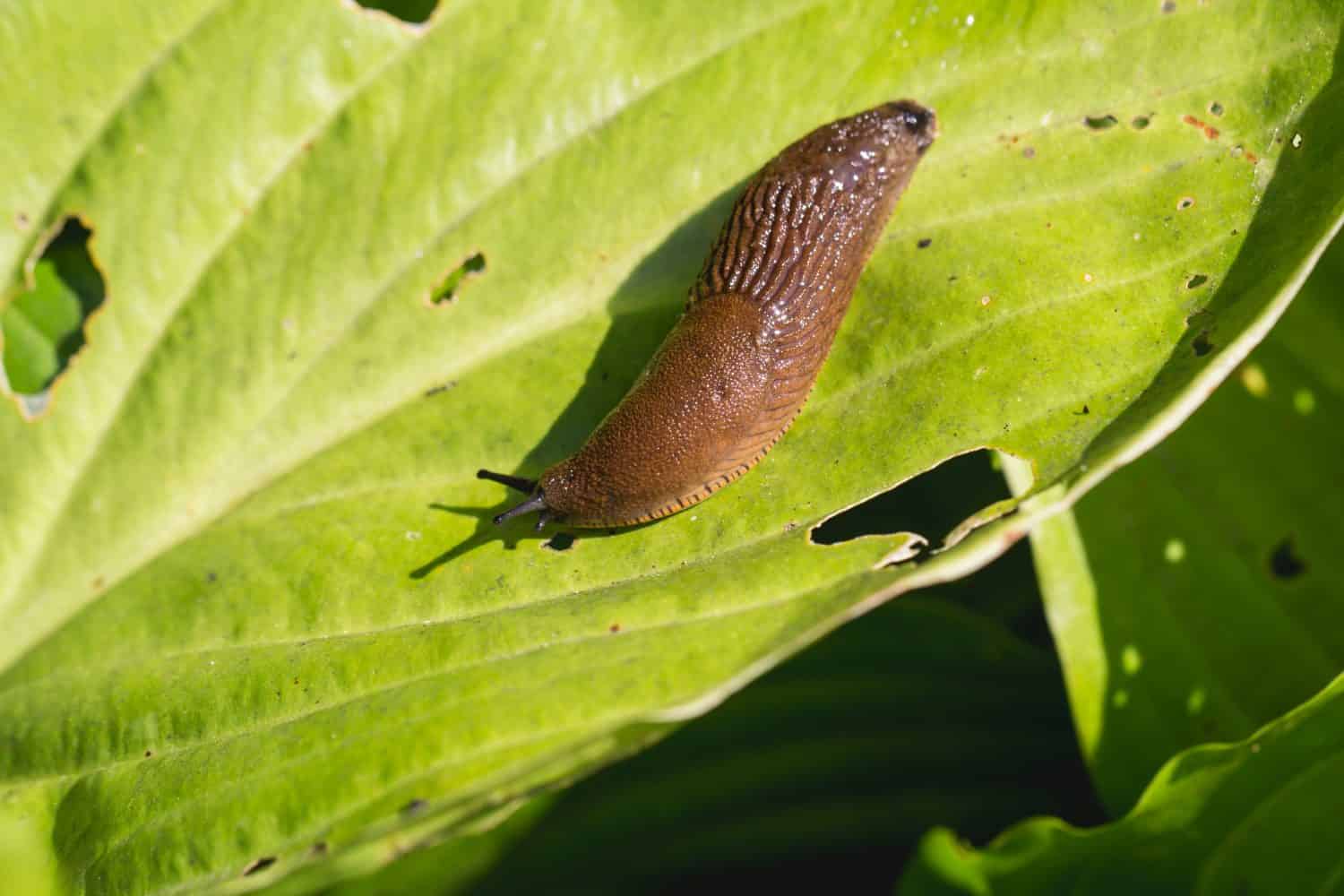
Slugs are considered to be the slowest animals on Earth
©Marija Stepanovic/Shutterstock.com
Tying for first place in total number of teeth is the slug. Like snails, these shell-less mollusks also have a radula. Another snail similarity is the fact that the radula can contain up to 20,000 of these tiny, razor projections. The yellow, extra-slimy, terrestrial banana slug found along the Pacific Coast of the U.S., has the most teeth.
Slugs continually lose and regrow rows of teeth. They eat by scraping up food, which they grind with the radula. And they eat almost anything, plant matter, stems, seeds, spores, and fruit, as well as decaying insects. These creatures are among the slowest animals on Earth.
Slugs are sometimes viewed as snails without shells, but the two are different species of gastropods.
3. Sharks
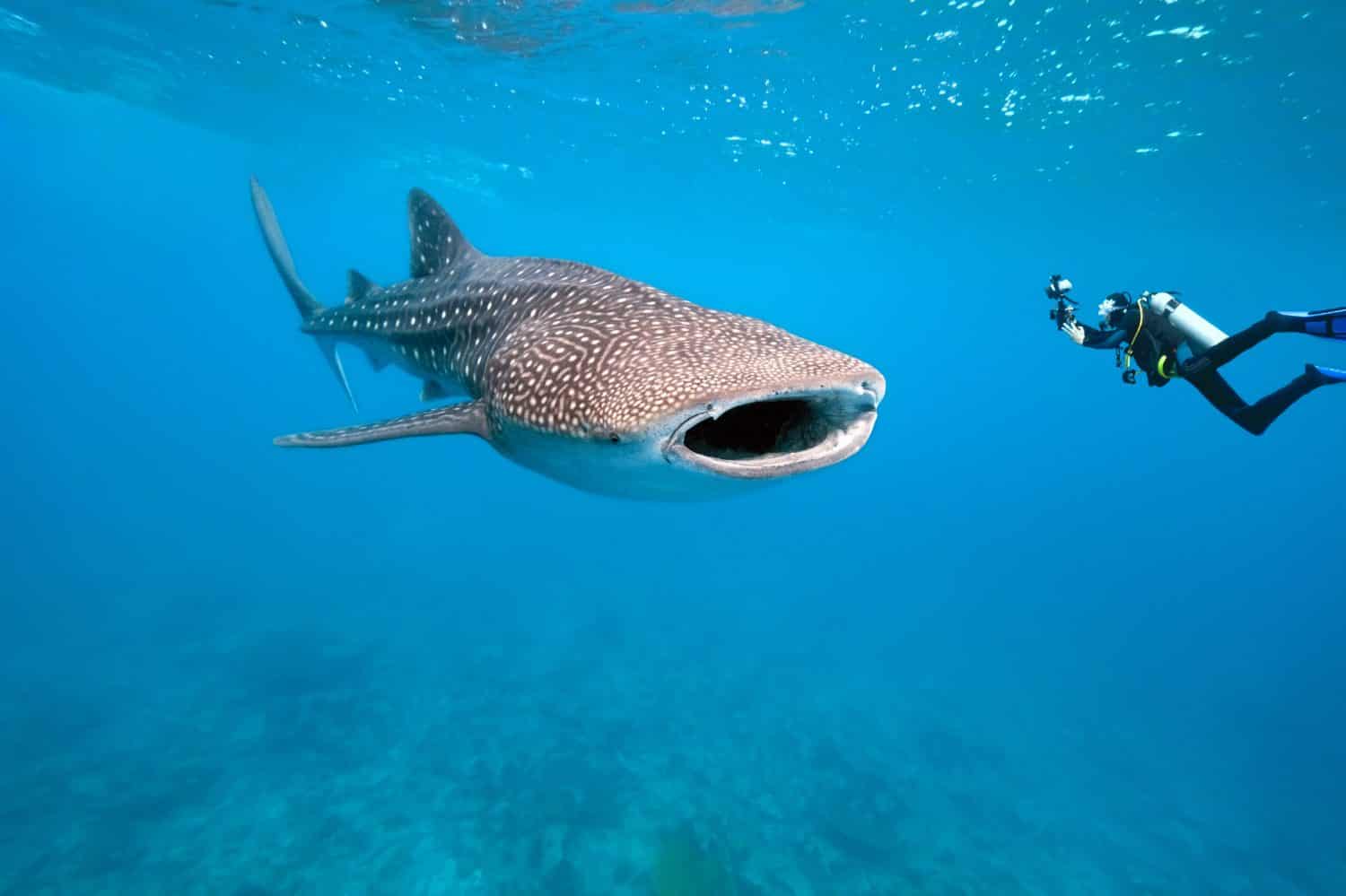
Despite the fact that
whale sharks
are filter feeders, they still have several thousand tiny teeth that are not needed for eating or hunting.
©Krzysztof Odziomek/Shutterstock.com
When you think of shark teeth probably the first thing that comes to mind is the great white shark (Carcharodon carcharias). Those frightening rows of serrated, long, and pointed teeth were made famous in the classic movie “Jaws” But great whites “only” have around 300 teeth.
If you want to see shark teeth, check out the whale shark (Rhincodon typus). This unique giant fish, which can be up to 40 feet long, has over 300 rows of teeth. Those rows can contain as many as 3,000 tiny teeth. The oddest thing about this gorgeous spotted fish with the large mouth is the fact that it doesn’t need its teeth to hunt or eat. The whale shark is a filter feeder. This animal swims with its mouth open to take in and filter plankton and other nutrients, teeth not required!
Sharks, which are born with all of their teeth, continually replace lost ones. Shark teeth do not have roots, nor are they attached to the gum.
4. Pacific Lingcod

The Pacific lingcod’s mouth contains over 500 teeth that are replenished daily.
©NatureDiver/Shutterstock.com
If the Pacific lingcod’s appearance and size don’t spook you, its incredible rows of razor-sharp teeth will. This bottom-dwelling fish has over 500 teeth in its huge mouth. And that’s not even the most fascinating aspect of its choppers.
In 2021 research published in the journal Proceedings of the Royal Society B described how the Pacific lingcod loses and almost immediately regrows 20 new teeth every day. These fish not only have two sets of jaws but their palates are also lined with hundreds of tiny teeth. Researcher Karly Cohen, Ph.D. described the toothy setup by noting that “Every bony surface in their mouths are covered in teeth.”
The Pacific lingcod’s back jaw — the pharyngeal jaw — is used for crushing prey. And it’s this back jaw that appears to lose the most teeth, the researchers found. As for what this fish dines on, that would be “anything it can shove in its mouth,” said Dr. Cohen.
The Pacific Lingcod (which is not related to a true cod) can grow to up to 80 pounds and five feet in length. It’s found in great numbers off the coasts of British Columbia in Canada and Washington state.
While the Pacific lingcod has an incredible number of teeth, its tooth loss and regrowth could be typical of other fish. “Most fish have teeth like lingcod,” Dr. Cohen said. “And so it could very well be that most fishes are losing mass amount of their teeth daily,” she added, and replacing them just as quickly.
5. Giant Armadillo

The giant
armadillo
has the most teeth of any land mammal.
©Heiko Kiera/Shutterstock.com
Looking like an armored tank, the giant armadillo (Priodontes maximus) is big both in size and well-equipped to accomplish its mission. With up to 100 teeth in its mouth, it wins the prize for having the most teeth of any land mammal.
Weighing over 100 pounds and measuring up to five feet long, these giants of the armadillo kingdom prefer to feast upon ants and termites. Using its super-size front claws, a giant armadillo can easily destroy a termite mound and eat the entire colony in one sitting, making it nature’s perfect exterminator. However, these ancient mammals, which are native to South America are listed as “vulnerable to extinction” by the International Union for Conservation of Nature. They are killed for food and for their huge claws, as well as being hit by cars — victims of ever-expanding highway systems. But these exotic creatures are so rarely seen and so elusive that they could easily become extinct without anyone realizing it.
6. Bottlenose Dolphin
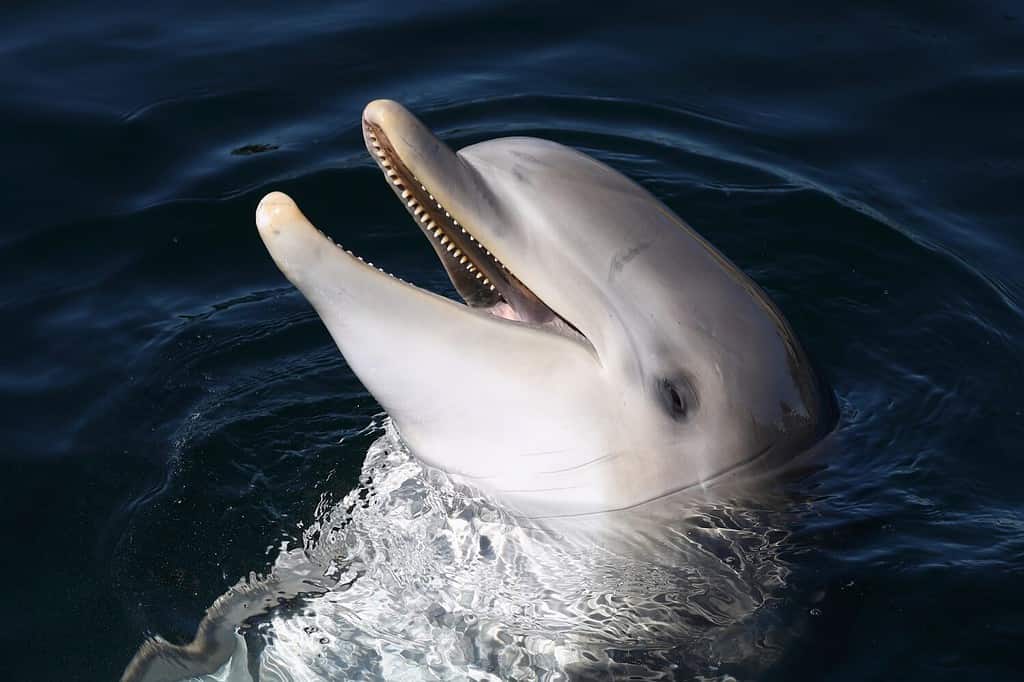
Bottlenose dolphins use their teeth not for chewing, but to catch prey.
©RMMPPhotography/Shutterstock.com
These “smiling” marine mammals can possess up to 100 teeth. Only this extensive set of choppers isn’t for chewing, but for catching prey. Their teeth come into play when they hunt for their preferred meals of fish, squid, and shellfish. They then swallow their meal whole. The bottlenose dolphin (Tursiops truncates) is found in waters all over the world, including bays, estuaries, and oceans.
Although not considered threatened, bottlenose dolphins are protected under the Marine Mammal Protection Act in the U.S. They are highly intelligent, using sound, as do whales, to communicate.
They are also very vulnerable to threats from human activities. This includes pollution, vessel strikes, and noise generated by various types of sonar, such as what is used to map the seabed for offshore energy exploration.
7. Boa Constrictor
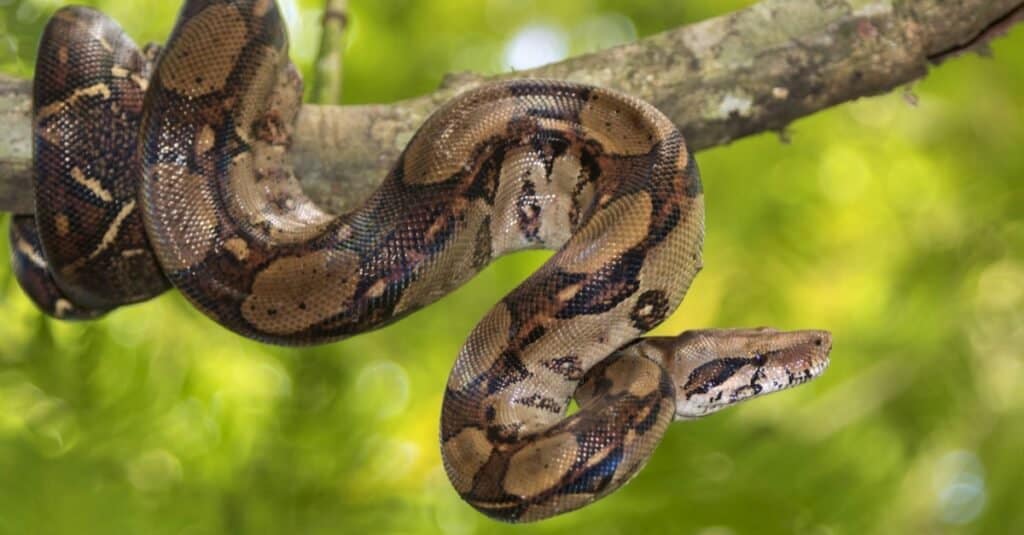
Boa constrictors can have up to 100 teeth that are used to latch onto prey.
©Natalia Kuzmina/Shutterstock.com
The common boa constrictor (Boa constrictor) is another animal that uses teeth for purposes other than chewing. It can have up to 100 sharp, menacing teeth curved inward to latch onto prey. Once its catch is in its mouth, the snake then twists its body around the victim, soon swallowing it whole.
This nonvenomous snake was originally thought to kill by constricting and suffocating its prey. However, research done in 2015 and published in The Journal of Experimental Biology tells a different story. What it found is that the boa’s constriction kills by cutting off the blood supply, rendering its prey unconscious in a matter of seconds.
8. Spinner Dolphin
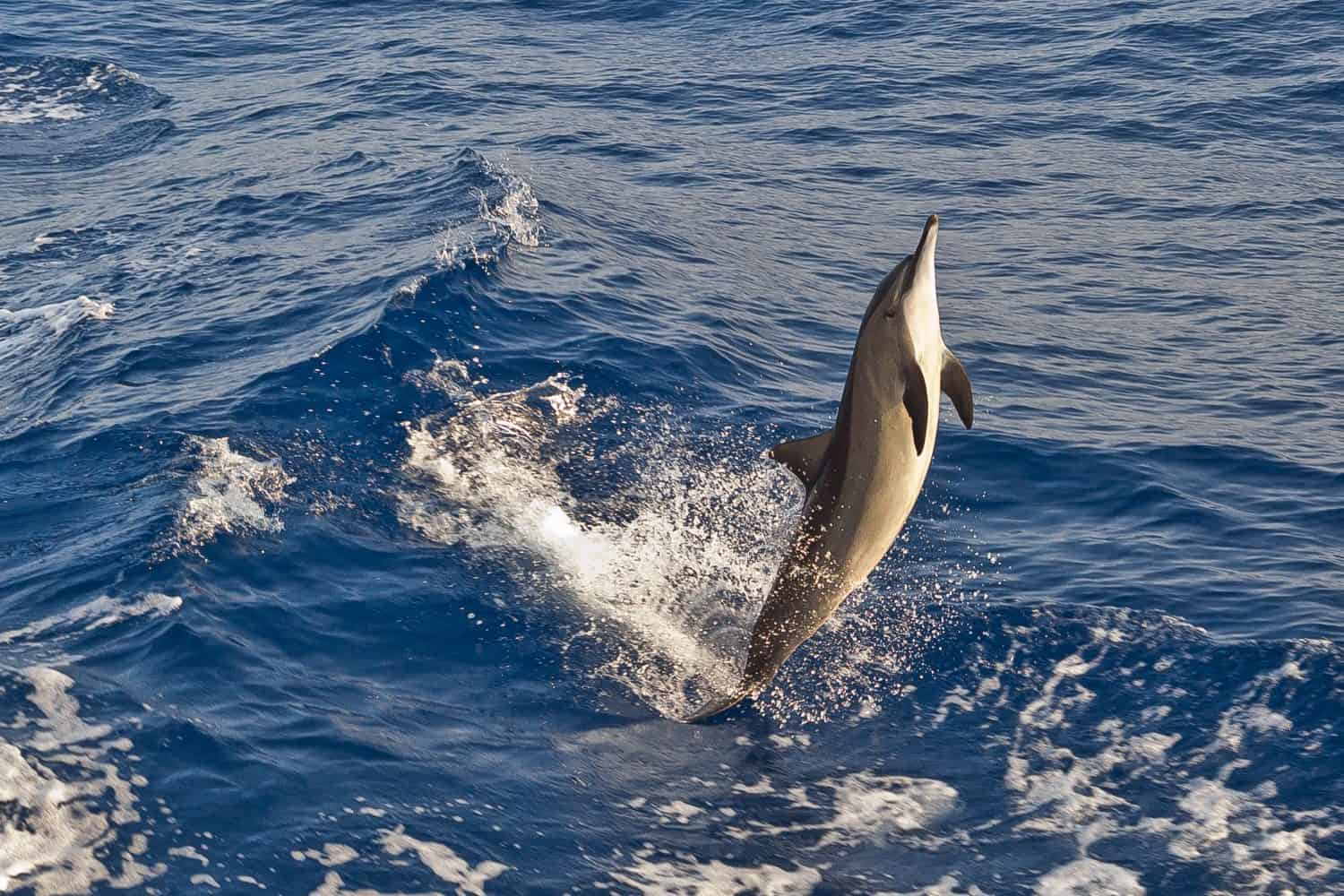
These marine mammals can not only leap high out of the water but spin while in the air.
©Gonzalo Jara/Shutterstock.com
Spinner dolphins (Stenella longirostris) have notable, long, thin beaks that can hold up to 65 teeth. Unfortunately, those teeth are considered a form of currency and jewelry in the Solomon Islands. Between 1976 and 2013, it’s estimated that over 15,000 of these marine mammals were killed in that part of the world, a group of islands northeast of Australia, for their teeth and meat.
Like bottlenose dolphins, spinners also use their teeth for grabbing and gripping prey. Their name comes from a behavioral quirk of leaping out of the water and spinning while in the air. Researchers have counted up to seven remarkable spins before they fall back to the water with a great splash.
The photo featured at the top of this post is © LuckyStep/Shutterstock.com
Thank you for reading! Have some feedback for us? Contact the AZ Animals editorial team.







